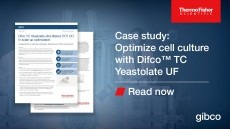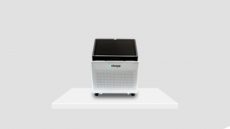Expert: Use fluid dynamics to navigate murky waters during scale-up

Computational fluid dynamics (CFD) – the use of computers to predict liquid flow – has application in a range of industries including the biopharma sector where it is particularly useful during process development according to Marc Horner from software firm Ansys.
He told BioPharma-Reporter.com “The goal of scale-up from the bench to plant scale is to design a process that provides the cells with a uniform growth environment throughout the tank.
“This means the mixing environment should avoid the creation of isolated recirculation regions and or regions of high or low nutrient concentrations” Horner said, adding that this requires knowledge of the impeller type, agitation rate, media properties and tank geometry.
“The key consideration” Horner continued “is understanding how the geometric design of the tank affects the hydrodynamics and mass transfer. The primary consideration for mass transfer is dissolved oxygen, which is important for supporting cell metabolism.”
And this is where fluid dynamics comes in. CFD allows process engineers to model the environment inside a bioreactor in more detail than other analysis methods according to Horner.
“CFD provides information about the transport environment inside the tank in 3-D space. This is in contrast to experiments where you get point measurements for the entire bioreactor,” he added.
“Once validated, the CFD results provide insights into the fluid flow and species transport at a much finer level of detail than would be possible via experiment. This allows the process development team to make much more detailed predictions about the flow environment.”
Cell shear history - an a measurement of the environmental conditions a cell will experience as at moves within the bioreactor - is one area CFD can help according to Horner.
“This kind of information can be very easily extracted from a CFD model, but would be very hard if not impossible to determine experimentally. Another benefit of modeling is that the engineer can test many different design configurations very quickly and easily without having to go into the plant."











